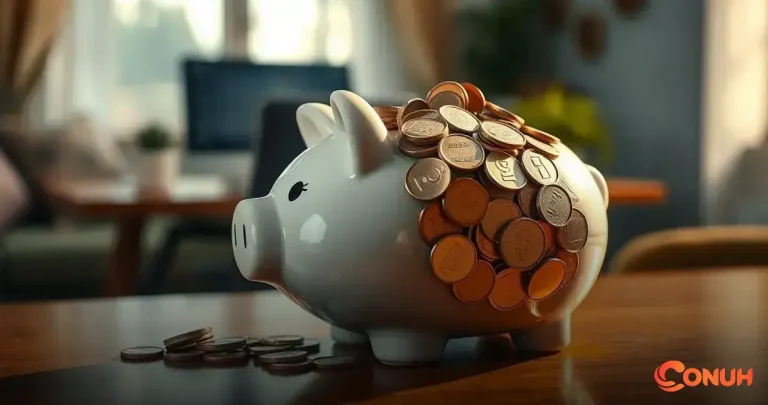ADVERTISEMENT
How to build an emergency fund is something everyone should know. It’s your financial safety net for those unexpected moments when life throws a curveball.
Setting aside money for emergencies means you won’t have to scramble for loans or credit cards when something urgent comes up. It’s about peace of mind and being prepared.
ADVERTISEMENT
Making a habit of saving and knowing where to start can feel overwhelming at first. Keep reading to discover simple, practical ways to create your emergency fund and take control of your financial future.
Understanding the Importance of an Emergency Fund
An emergency fund is your financial safety net. It helps you when life throws unexpected challenges your way, like a job loss or a medical emergency. Having money set aside means you won’t have to rely on credit cards or loans, which can lead to bigger problems.
Understanding the importance of an emergency fund is crucial. It provides peace of mind and reduces stress during tough times. When you know you have savings to fall back on, you can face emergencies with confidence, rather than panic.
Building this fund is not just a good idea; it’s essential. You can start small and grow your savings over time. Just remember that having that cushion can make a big difference when you need it most.
Steps to Calculate Your Emergency Fund Needs
Calculating your emergency fund needs is a vital step in financial planning. Start by reviewing your monthly expenses. This includes rent, utilities, food, and any other regular costs. A good rule of thumb is to aim for three to six months’ worth of expenses in your emergency fund.
Next, consider your job stability and personal situation. If you have a stable job and few expenses, you might choose the lower end of the three to six months. However, if your job is less secure or you have dependents, it might be safer to aim for a larger fund.
Lastly, don’t forget to adjust your emergency fund as your situation changes. Major life events like a new job, marriage, or having children can change your financial needs. Regularly reassessing can help ensure you have enough saved to feel secure.
Where to Keep Your Emergency Fund

Choosing the right place to keep your emergency fund is crucial for easy access and safety. A high-yield savings account is a popular choice because it earns interest while keeping your money safe. Look for accounts with no monthly fees and easy online access.
Some people consider money market accounts as an option. These accounts often offer higher interest rates than regular savings accounts. They also provide the flexibility to write checks, making it easy to access your funds when needed.
Avoid keeping your emergency fund in stocks or long-term investments. While these might grow over time, they can also lose value when you need money urgently. The goal is to have quick access to cash without worrying about market changes.
Best Practices for Building Your Fund
Building your emergency fund starts with setting a clear savings goal. Decide how much money you want to save and create a timeline for reaching that goal. Having a specific target makes it easier to stay motivated and track your progress.
Next, make saving automatic. Set up a direct transfer from your checking account to your savings account each month. This way, you’re putting money aside without even thinking about it. Treat your savings like a regular bill that needs to be paid.
Finally, consider cutting unnecessary expenses to boost your savings. Look at your monthly spending and see where you can reduce costs, like dining out or subscriptions you don’t use. Every little bit you save can help you reach your emergency fund goal faster.
Mistakes to Avoid When Saving for Emergencies
One common mistake people make when saving for emergencies is not setting a specific goal. Without a clear target, it’s easy to lose focus and motivation. Decide how much money you need based on your living expenses and aim for that amount.
Another mistake is using your emergency fund for non-emergencies. While it can be tempting to dip into your savings for minor expenses, doing so can leave you unprepared when a real emergency strikes. Keep your fund strictly for unexpected events like medical bills or job loss.
Finally, don’t forget to regularly review and adjust your savings plan. As your financial needs change, your emergency fund should too. Make sure to increase your savings if your expenses rise, or if you reach your initial goal, set a new one.
How to Stay Motivated While Building Your Emergency Fund
Saving money can sometimes feel like a slow process, especially when emergencies seem far away. To stay motivated, celebrate small milestones along the way. Every little bit you save is progress toward your financial safety net.
Visualizing your goal can also help keep you focused. Create a chart or use an app to track your savings growth. Seeing the numbers increase makes the effort feel more rewarding and real.
Lastly, remind yourself why the fund matters. Having money set aside means less stress and more freedom during tough times. Keeping that peace of mind in mind can push you to stay consistent and committed.
How to Handle Emergencies When Your Fund Is Not Yet Ready
If your emergency fund isn’t fully built yet, don’t panic. Start by prioritizing the most urgent expenses. Focus on covering essential costs like rent, food, and healthcare first to manage the immediate situation.
Consider borrowing from trusted sources like family or close friends if needed. While it’s not ideal, this can help you get through a tough spot without resorting to high-interest loans or credit cards.
Use the experience as motivation to boost your savings. Once the emergency passes, make it a priority to grow your fund faster to avoid future stress.
Additional Tips to Keep Your Emergency Fund Growing
Look for extra income opportunities to speed up your savings. This might mean freelancing, selling unused items, or taking on a part-time job. Every extra dollar can help you reach your goal sooner.
Automate your savings whenever possible to avoid forgetting or skipping deposits. Setting up automatic transfers creates a habit that works for you without added effort.
Finally, stay flexible and patient. Life changes, and so will your financial needs. Adjust your savings plan regularly to make sure your emergency fund grows with you.







